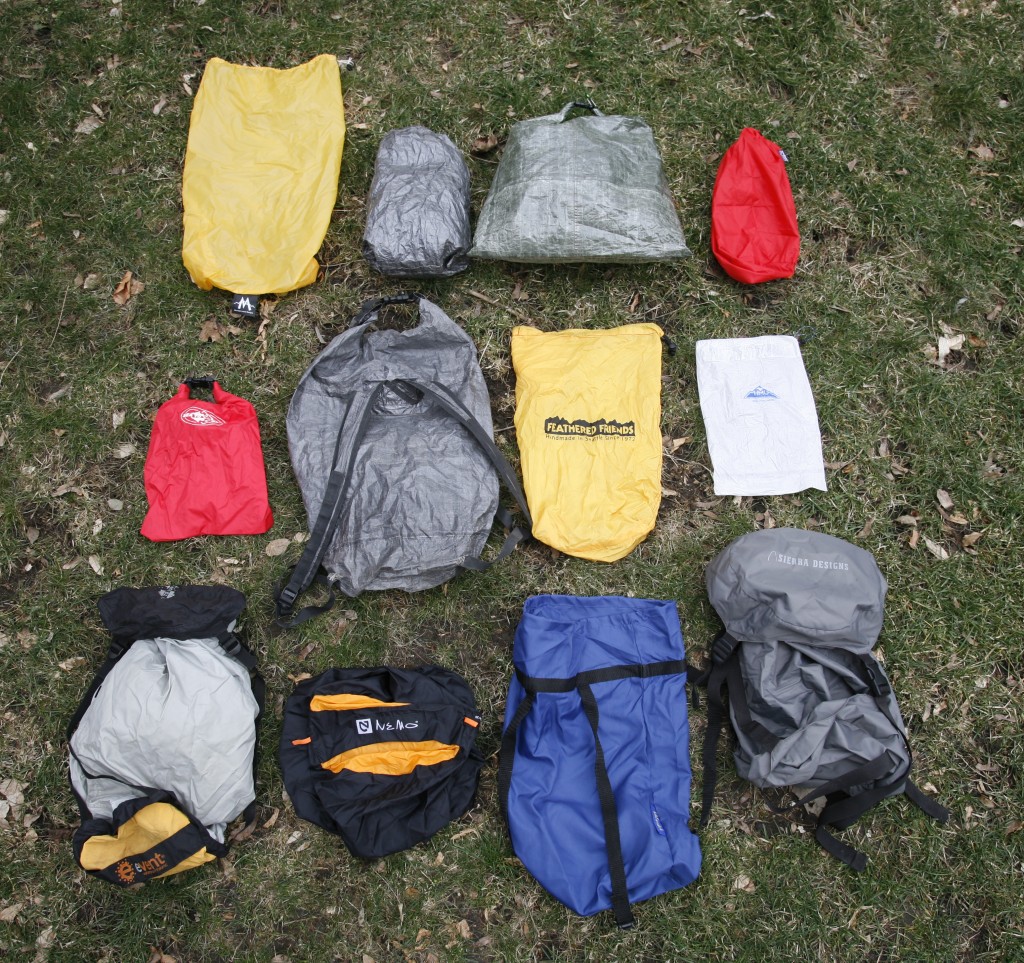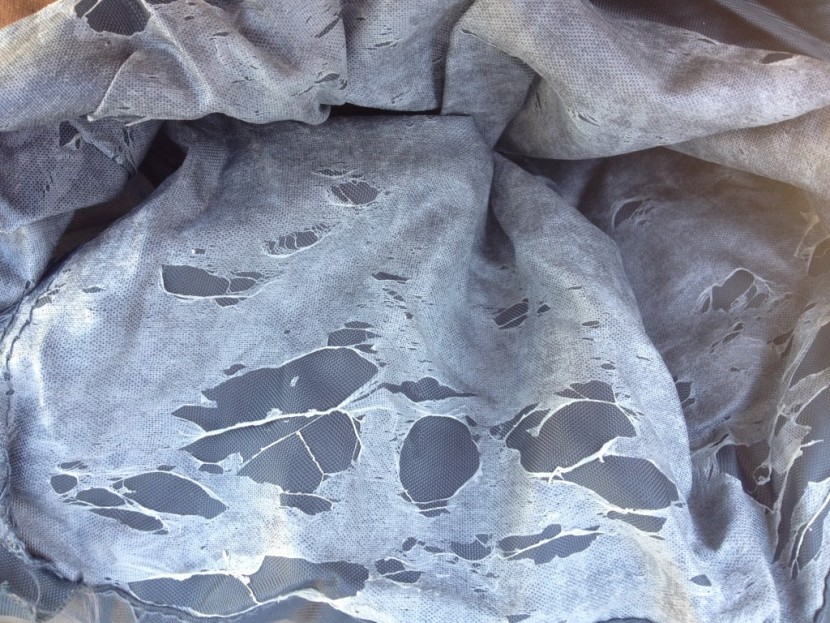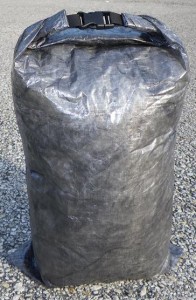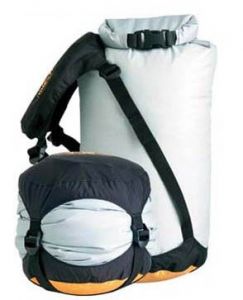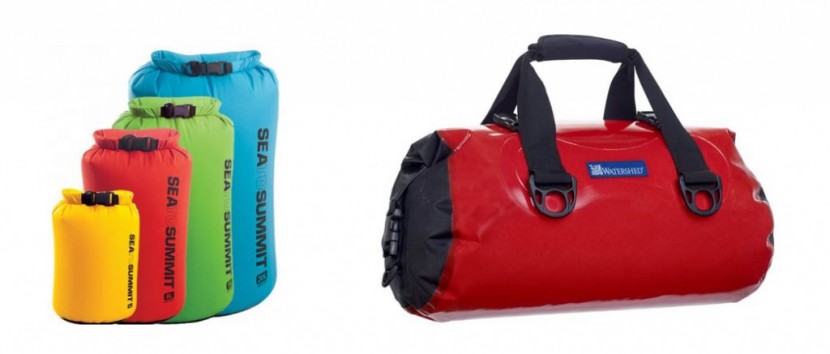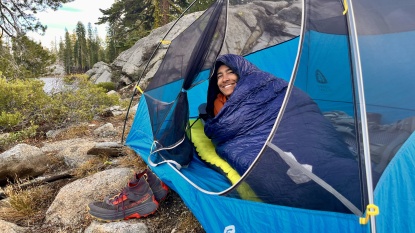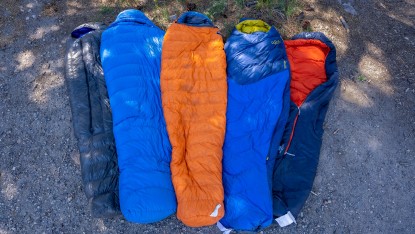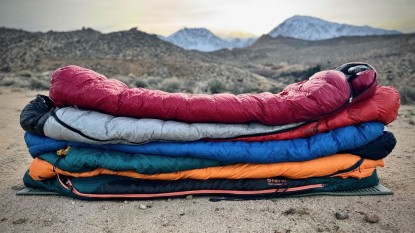Most Free Sleeping Bag Stuff Sacks are Terrible
Sleeping bag stuff sacks are a critical piece of gear. They serve two important roles: (1) to minimize the packed size of your sleeping bag --thereby freeing up crucial space inside your pack, kayak, or pannier-- and, (2) to protect your sleeping bag from water, dirt, and adventure grime. Through testing more than 70 sleeping bags from dozens of manufacturers OutdoorGearLab testers have used all types and styles. 99% of the stuff sacks that ship with sleeping bags are most disappointing. That is, they are either not durable, heavy, or not waterproof, or all of the above. The best sleeping bag stuff sack is completely waterproof (with sealed seams and a dry bag closure), lightweight, and durable. Here we aim to share a few thoughts on our favorite sleeping bag stuff sacks for specific applications.
Best for Three-Season Sleeping Bags
Best For Winter and Synthetic Bags
The Most Versatile
The shoulder strap equipped dry bag Hyperlite Mountain Gear Stuff Pack is the most versatile we've ever used. This 3.4 ounce gem holds around 25 liters of gear and packs down small enough to fit inside your back pocket!! Our testers primarily use this as a stuff sack and less frequently as a backpack. In addition to backcountry applications, such as use as a sleeping bag stuff sack and then summit pack for mountaineering (see photo below), it's exceptionally useful for traveling, bicycle tours, as a gym bag, or grocery bag. Choose from two different materials of differing durability.
The Best Value
Grab whatever stuff sack you have, or purchase the cheapest one you can find, and line it with a contractor style trash bag to create the least cost waterproof option. Cut the contractor bag to fit the sack better and tie off the top either in an overhand knot or with a few twists- compression from other items in your pack makes the seal watertight. This setup proves to be surprisingly durable with low-quality sacks; the trash bag provides the waterproof lining and the nylon or polyester sack increases longevity by supporting the trash bag and by increasing abrasion resistance. This is a tried and true budget option. Unfortunately, most cheap sacks break relatively quickly and contractor bags are rarely waterproof after roughly one month of hard use. Therefore, if you do a lot of overnight trips, we believe it's worth investing in a more durable waterproof sack, such as the other models mentioned in this article.
The Best Submersible Dry Bag
Although the above sacks can handle brief submersion, they are best for an occasional wetting from rain, melting snow, or to protect their contents from other wet items that lie nearby. For water sports we've found that polyurethane and PVC coated materials are better than cuben fiber because they retain their submersible properties for longer. Also, ultralight dry bags like those from ZPacks and Hyperlite Mountain Gear lack a semi-rigid closure that helps to keep them firmly closed when they aren't full of gear and when they aren't surrounded by other objects that compress them, like would occur if they were packed in a backpack.
For weigh conscious water sports, like packrafting, the Sea to Summit Ultra-Sil Compression Dry Sack provides a good balance between moderate durability and weight savings. For applications where weight is less of a concern, such as for kayaking, canoeing, and general boating, we've found that ultra burly Watershed ZipDry bags are the ultimate 100% waterproof flexible storage solution, but they are far too heavy for use as a sleeping bag stuff sack. Waterproof hard cases, like those made by Pelican, SKB, and Nanuk, are the most durable portable waterproof storage solution we know of.

